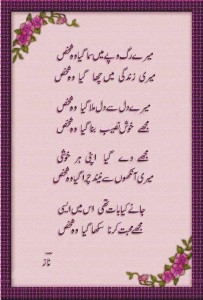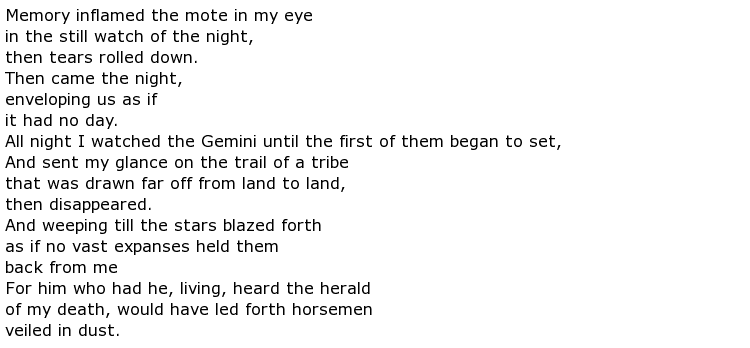 Urdu poetry has a long history, with a variety of interesting twists and turns in its development. There are at least six major different forms of Urdu poetry which range from religious to romantic themes. For example, there is the Ghazal, which is typically a short lyric poem often focused on love and romance, although it may have more generalized themes. This form of poem usually maintains the same rhyme scheme throughout. Then there is the Qasida, which is a type of ode, which is often done as a public speech for some benefactor. It can also be used when celebrating an important event; however, this form can also be used as a satire in certain instances.
Urdu poetry has a long history, with a variety of interesting twists and turns in its development. There are at least six major different forms of Urdu poetry which range from religious to romantic themes. For example, there is the Ghazal, which is typically a short lyric poem often focused on love and romance, although it may have more generalized themes. This form of poem usually maintains the same rhyme scheme throughout. Then there is the Qasida, which is a type of ode, which is often done as a public speech for some benefactor. It can also be used when celebrating an important event; however, this form can also be used as a satire in certain instances.
Memory Inflamed
by Muhalhil

The Marsiya, which is essentially the same as an elegy, is usually written regarding the death of a leader or a member of his family or a close friend or loved one. The format is typically in stanzas of six lines each, with a specific rhyme scheme. The use of these elegies during the first ten days of the celebration of Muharram is considered to be one of the most significant events in a typical Muslim life. A well-written Marsiya is usually done in an epic format. Some of the best known writers of this style of Urdu poery are Mir Nawab Ali Munis, Ali Nawab Qadeem and Gauher Luckhnavi.
Is the Circus Show Over (excerpt)
by Roya Zereh

The Masnavi form of Urdu poetry usually deals with love and romance. It is quite common that this form of poem be written in excess of several thousands of lines. Yet it is also common to see it written in a more shorter version. These poems are composed of couplets, usually with a bacchic tetrameter as the basis. There is also an iambus used in the closing foot of the Masnavi style of poem. Urdu poetry truly found its high point during the 19th century. The highest developed form of Urdu poetry is usually considered to be the Ghazal. This has truly exceeded all of the other standard forms of Urdu poetry, both in terms of its quality and of it quantity. The Ghazal has not only a very specific form, but it also maintains a focus on one topic: love and romance. More specifically, this format of Urdu poetry focuses on unattainable and illicit love. Many of the forms of this poetry which have their origins in the sub-continent of India are often influences by Islamic Mysticism, with the topic of love often interpreted as representing a mortal beloved or even a higher being. Either way, this love is frequently looked upon as something that can make a human being complete — if it is attained, it will elevate the person into the ranks of the esteemed or of the wise, thus bringing some satisfaction to the very soul of the one who wrote the poem.


You must register to comment. Log in or Register.